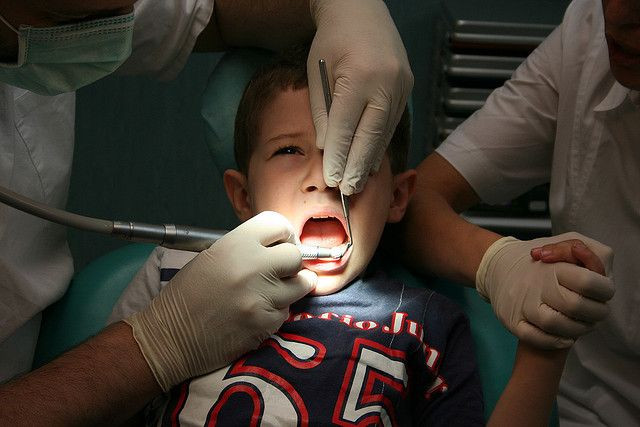Nanotechnology At The Dentist's Office: Self-Healing Teeth May Soon Be On The Horizon

Whether you know it or not, you may have already experienced the fruits of nanotechnology while trapped in the dentist’s chair. Yet, in a new review of nanodentistry, one team of scientists say the nano-evolution has just begun. Next-generation dental materials will help your teeth self-heal, rebuild your enamel, and may even protect against bacterial infections.
“Recent developments in nanomaterials and nanotechnology have improved and will further advance dentistry and oral health care in the near future,” wrote the team of Brazilian and Spanish researchers. “Nevertheless, great challenges involving ethics and safety regulations, as well as cost-effectiveness, need to be addressed and overcome before new nano-based dental materials are introduced in the market.”
Dwarf
The prefix "nano" is derived from the Greek word "dwarf," and "nanotechnology," as originally conceptualized by Physicist Richard P. Feynman in 1959, refers to the manipulation of matter on the atomic and molecular levels. According to the National Nanotechnology Initiative, any material with components less than 100 nanometers in at least one dimension is considered a nanomaterial. (If a nanometer is one-billionth of a meter, then a single strand of human hair ranges between 80,000 and 100,000 nanometers wide.) The reason nanomaterials are so alluring is their properties are different from non-nano-materials in two crucial ways. First, due to their small size, nanomaterials have greater surface area per unit mass compared to bigger particles. Second, all quantum effects (including energy, electrical, optical, and magnetic) become more dominant at the nanoscale. Any material, then, will possess unusual properties at the nanoscale whether it be gas, liquid, or solid.
A decade ago, according to the current review, engineers first introduced nano-composite resins to be used in dentistry.
“These resin-based composites (RBCs) containing nanoparticles exhibit a high surface free-energy that exerts differential behavior in terms of mechanical and physicochemical properties, such as an excellent color density, low polymerization shrinkage, adequate surface brightness, low surface roughness, resistance to fracture, and excellent adherence to dental tissues,” wrote the authors.
Because these composites have been so successful, engineers continue to explore new ways nanotechnologies might be used in the dentist's office. Someday nanomaterials may provide “mechanical reinforcement, improve aesthetic aspects, and induce antimicrobial and therapeutic effects,” the authors explain. Remineralization of enamel via nanoparticles is already being explored and going forward, the authors suggest antimicrobial adhesives will act as wearable toothpaste while quantum dots combined with cancer-specific antibodies may be applied to the mouth to emit light when detecting cancerous cells. More generally, nanoparticles introduced into common dental materials could prevent or control oral diseases.
With nanotechnology research already funded to the tune of billions of dollars, the authors advise the need for safety. In particular, nanomaterials could be toxic to healthy cells, so any nanodentistry materials would require pre-clinical and clinical trials before approval. Also, patients would need to be informed of any treatments using nanomaterials and the possibility of side effects. That said, the authors remain optimistic, believing any hurdles will be overcome.
“Exciting technological advances may bring to fruition new restorative dental materials with unsurpassed durability and aesthetic properties,” concluded the authors. Soon, it seems, we may be sharing perfect smiles well into old age.
Source: Padovani GC, Feitosa PV, Sauro S, et al. Advances in Dental Materials through Nanotechnology: Facts, Perspectives, and Toxicological Aspects. Trends in Biotechnology. 2015.



























